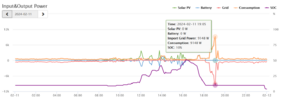Enquiring for a friend as to issues re. EV Charger install. As he has an all electric kitchen ie. dish washer, induction hob, washing machine etc. and only a 60A main fuse. He realises that his DNO will need to fit a 100A main fuse.
Before he books an electrician, he intends to contact UK Power Networks. Will they be able to furnish information re. whether he has a looped service and if his power cable is greater than 16mm to allow them to fit the increased rating fuse. If they give him the positive information required and agree to fit one. What apart from the fuse change do they do on attendance. Do they inspect existing wiring & bonding and do they ask for certificates.
The 100A fuse seems necessary as a 150 mile recharge will be required every night and a 3.7kW charger wouldn't be man enough
Any help/ advice appreciated.
Before he books an electrician, he intends to contact UK Power Networks. Will they be able to furnish information re. whether he has a looped service and if his power cable is greater than 16mm to allow them to fit the increased rating fuse. If they give him the positive information required and agree to fit one. What apart from the fuse change do they do on attendance. Do they inspect existing wiring & bonding and do they ask for certificates.
The 100A fuse seems necessary as a 150 mile recharge will be required every night and a 3.7kW charger wouldn't be man enough
Any help/ advice appreciated.


